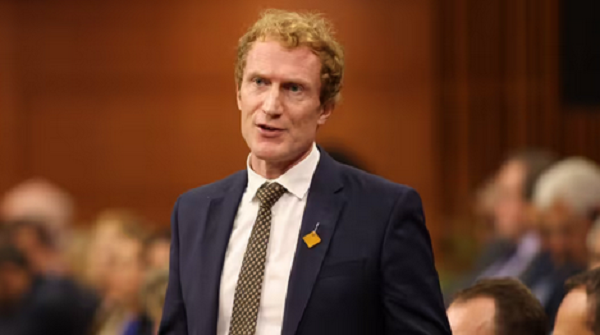More than $900 billion in mortgage to be renewed in next three years, a looming ‘mortgage payment shock’ : RBC says
More than $900 billion in mortgages at Canadian banks are set to renew in the next three years, increasing the risk of credit losses as some borrowers see payments rise by nearly half at renewal, according to analysts at RBC.
In a report titled “Canadian Banks: A review of mortgage payment shock,” a team of RBC researchers led by analyst Darko Mihelic revealed that around 60 per cent of mortgages at Canadian chartered banks are set to renew between now and 2026, hurting banks’ profits and homeowners’ wallets amid soaring borrowing costs.
Those who set up fixed-rate mortgage terms before the Bank of Canada started raising its key interest rate, to five per cent in October from 0.25 per cent in March 2022, will face sudden and significant increases in their monthly payments, according to the report’s authors.
“Unless there are significant declines in interest rates, we believe that credit losses will inevitably rise, perhaps significantly in 2025 and beyond,” the report said. (Credit losses are an estimate of outstanding payments owed to a company that it does not expect to recover, including mortgage defaults.)
This year, the Office of the Superintendent of Financial Institutions, Canada’s banking regulator, ordered big banks to set aside billions more in rainy-day funds to prepare for debt defaults. As a result, banks have nearly tripled the amount set aside for bad loans in their most recent earnings compared to the third quarter last year.
Carl De Souza, senior vice-president at DBRS Morningstar, said the banks are preparing for the upcoming payment shocks, adding that mortgage defaults are not a major threat to the big six Canadian banks as they have “extremely strong credit quality.”
And while Canadian residential mortgages make up approximately 35 per cent of total loans for the Canadian banks covered by analysts at RBC, “mortgages are the last thing to go in the waterfall of credit products,” De Souza said.
The coming wave of renewals is poised to hurt banks’ profitability by weakening revenue and loan growth. But the effect of mortgage losses may be smaller than expected, the report said, attributing the strength of Canadian mortgages to Canada’s low unemployment rate, which remains below pre-pandemic levels.
Renewals are also expected to be painful for homeowners, and banks are exploring avenues to mitigate the impacts of payment shocks, such as renegotiating the mortgage terms from variable to fixed rate, De Souza added.
According to the report, more than half of Canadians are choosing a three-year fixed-term mortgage today. Based on current rates for this type of mortgage at several financial institutions in Ontario, borrowers should expect to renew at six to eight per cent, according to Ratesdotca.
In November 2019, rates for a three-year fixed-term mortgage were 2.84 per cent, according to the report, which collected data from Statistics Canada on funds advanced to Canadian banks.
More than $186 billion in mortgages will renew in 2024, said the report. With today’s interest rates, the payment shock would be 32 per cent on a weighted average basis, the report said.
In 2025, RBC is estimating $315 billion in mortgage renewals, while payments are expected to rise by 33 per cent on a weighted average basis.
And in 2026, a whopping $400 billion in mortgages will be up for renewal. Payments could rise by as much as 48 per cent on a weighted average basis.
Even if the Bank of Canada’s key interest rate returns to 0.25 per cent by July 2026 — “an unreasonable expectation at the moment,” the report stated — payments are still expected to jump by 20 per cent. Currently, RBC estimates that the central bank, which maintained a pause in rates in October, will begin cutting rates in September 2024, reaching four per cent in January 2025.
This article was reported by The Star
















